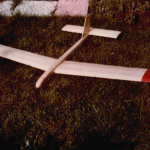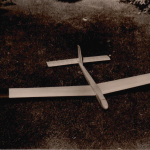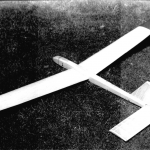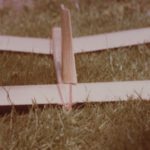Home » Model Flying (Page 2)
Category Archives: Model Flying
Categories
- Guitar Playing (4)
- Ham Radio (4)
- Model Flying (18)
Archives
- April 2024 (1)
- July 2022 (1)
- August 2021 (1)
- May 2021 (2)
- August 2020 (7)
- June 2020 (1)
- May 2020 (1)
- October 2019 (1)
- November 2017 (3)
- June 2017 (8)
My Model Flying History (1960)
1960: In a Mickey Mouse issue I found the instructions for building a chuck glider including a blueprint of the plan and all the information for the material required. When I showed the plan to my father, he didn’t really believe that I would be able to build the plane. However, he agreed with my mother that we should buy the material. There was a small model shop close to the harbor of Elmshorn. It was operated by a couple named Vietzke. He was a passionate hunter and mainly sold rifles. His wife took care of the model making department.
To our horror, we found that balsa wood was only sold in whole sheets measuring 100 by 10 cm. We had to buy three sheets in three different thicknesses. Plus a tube of UHU-Hart. All together, that made around 5 DM. A lot of money for us in those days! When my father came home in the evening he said: “Well, then start building! If it actually flies, I will buy you a larger model.” Of course that was a huge incentive for me.
I assembled the model according to the plan. But since I had no practice in gluing the parts together exactly, the end product looked rather crooked. Nevertheless, I made my first flight attempts in our garden and in the “Zeppelinplatz” grassland. The model never flew straight but made loops and rolls depending on how hard it was thrown. I thought that was okay and was thrilled.
Fortunately, I was able to transfer my enthusiasm to my parents. So, a few weeks later, we went back to the model shop and had a look at the kits that were available. Fortunately, Mrs. Vietzke advised us very well and recommended a small free flight model, called “Little UHU” from Graupner. We also bought the necessary accessories: trim lead, pore filler, dope, towline. The tissue paper was already included with the kit.
I assembled the model with the help of my father. Since my father was a painter by profession, the tissue covering and painting job was no problem and the result looked really nice. We needed a larger grassfield for the test flights. We found it between Weidenstrasse, Waldweg and Wittenberger Strasse. Today this field is also completely covered with single-family houses. Back then there was a lot of space and you could climb up the dam of Wittenberger Strasse to start the model from an elevated position. We did not use the full line length for the high start, but limited it to approx. 30 meters. The “UHU” had no automatic steering and always flew straight ahead. It had to be recovered from an adjacent hedge almost each time. In any case, we had a lot of fun and were very motivated to continue.
My Model Flying History (1959)
1959: Our family had moved to a new location in Elmshorn. The name of the street was Langenmoor. I glued together some plastic kits for small fighter planes (ME-109 etc.) produced by the Revell company. I could only let them fly in my imagination adding the engine noise with my mouth.
I also built kites out of hemp twine, paper and pine strips. A carpenter in Goethestrasse sawed these strips for little money. I was able to fly the kites on a grassland between Langenmoor and Danziger Straße. That was a lot of fun. Today, this field is completely covered with apartment buildings and is now called Zeppelinplatz.
My Model Flying History (1956)
1956: It all started when I became 6 years old. My father had a colleague, Gerd Mix from Kollmar at the Elbe river, who was an experienced model flyer. So my dad asked him if he could build us a small flying model that I should be given as a birthday present. It was a rubber powered model of very light construction with tissue covering. We had it fly in the garden behind our house in the Goethestraße in Elmshorn. Since we did not get enough turns into the rubber, the flights were very short. But I was fascinated and became hooked.
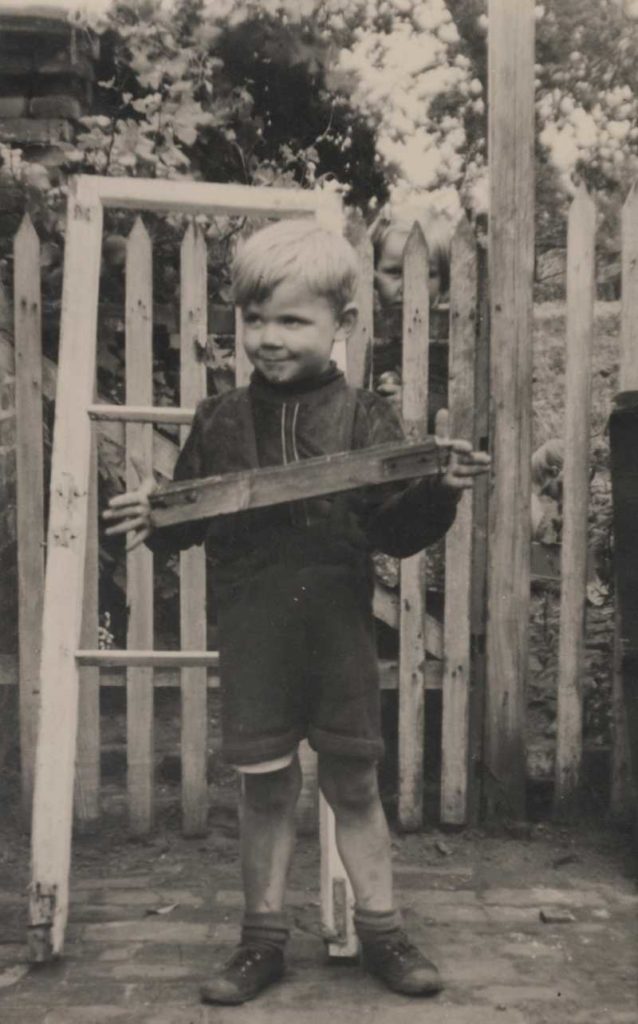
I was interested in woodwork from childhood 😉 Here I dismantled an old window frame in front of our garden gate on Goethestrasse. My sister was watching it from the background.
My Riser V-Tail
Here I want to show you my version of the SIG-Riser model sailplane.
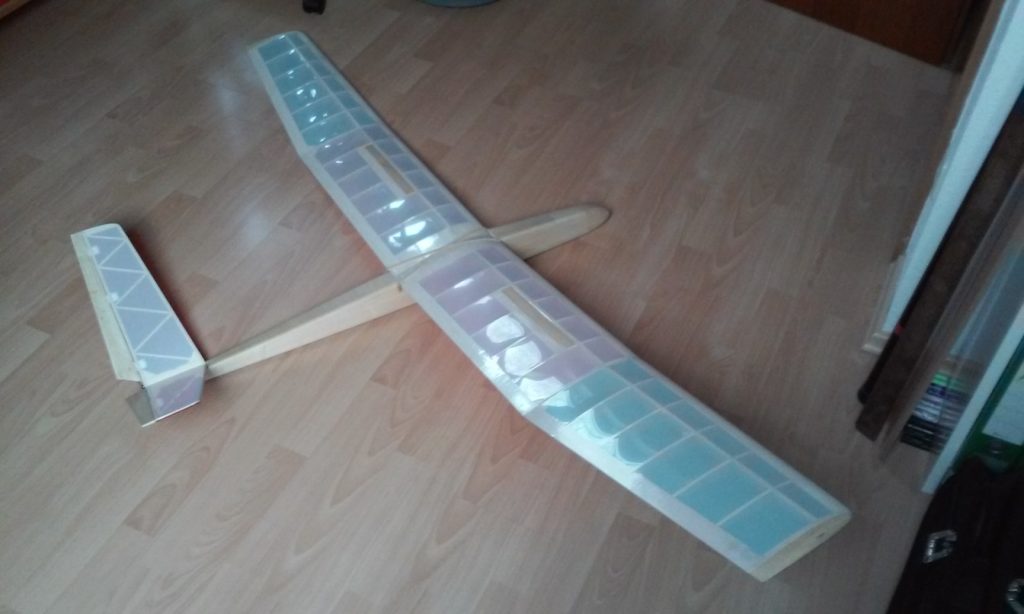
This year, the idea came up in our club, to organize a competition of the R.E.S. class. R.E.S. stands for “Rudder Elevator Spoiler”. This class for simple 2-meter model sailplanes has become extremely popular in Germany. As I wanted to participate in this contest, I had to build an appropriate model. My choice was the “Riser” offered by the SIG company. One reasson for this was the extremely low price for the kit.
The building instruction was straight foreward, so I put the plane together in very short time. When it was time to build the vertical and horizontal stabilizers, I decided to make a change. I was convinced that the normal cross tail would be to heavy. So I changed it to a V-tail. I set the opening angle between the two sides to 120 degrees and extended their length by 15 percent to get enough area in the vertical projection. I hoped that nevertheless enough controllability was given. The maiden flight should show it.
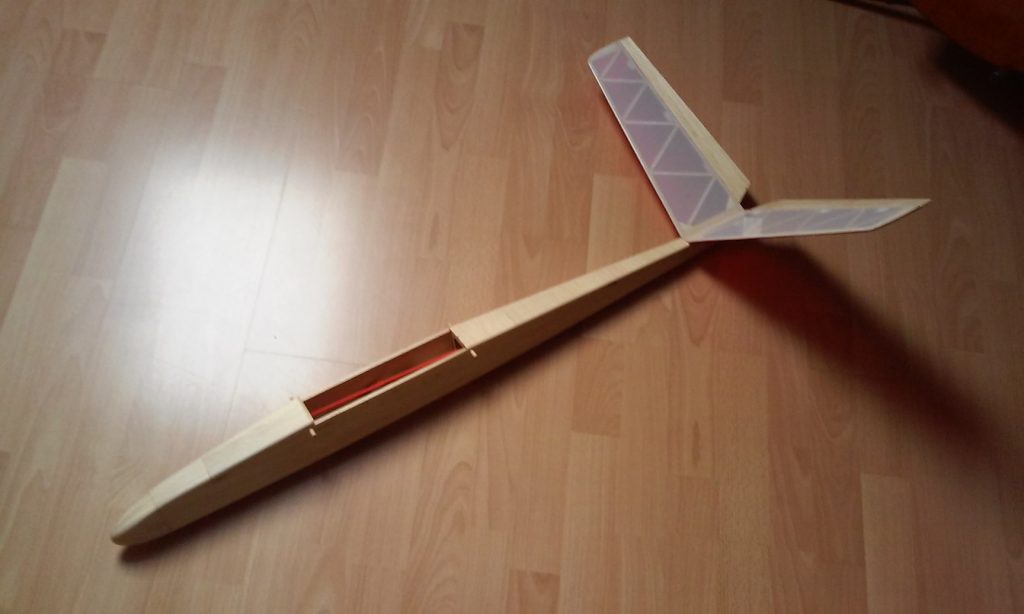
The plans for the model included an extra sheet for the installation of spoilers. Unfortunately, the material for this was not included in the kit. As I wanted to use two separate servos for the two wing sides, I had to think about a different way how to control the spoilers. Now they are hinged at the front edge with plastic tape and pushed up directly by the servo horns. Small magnets hold them down in the retracted position.
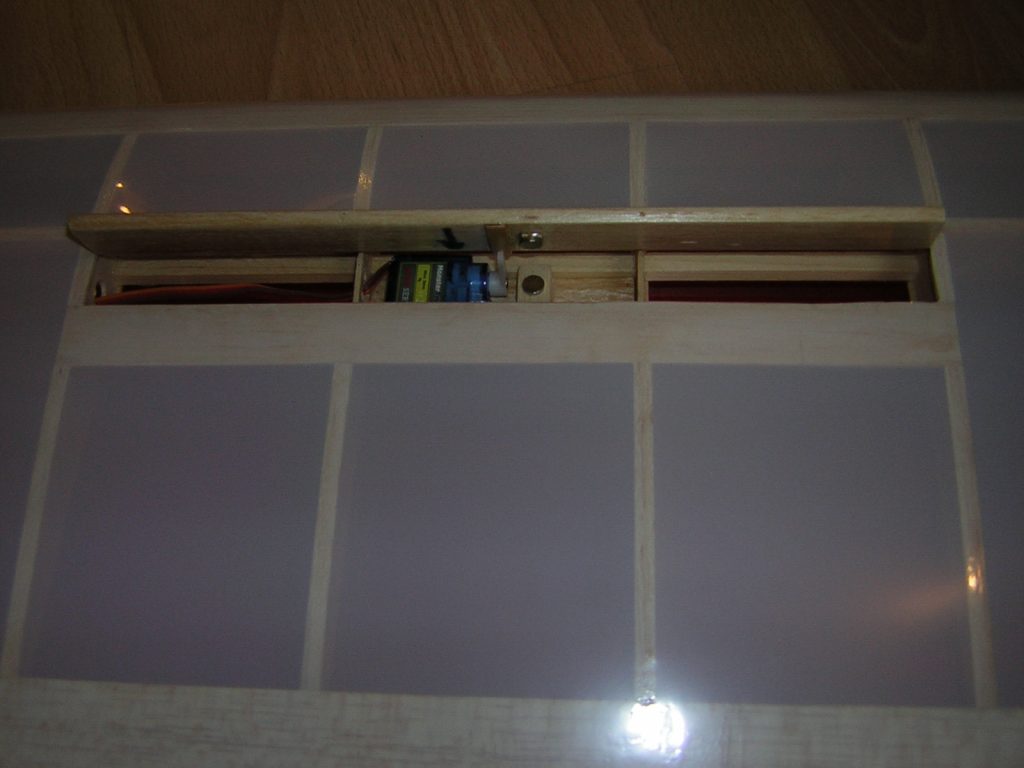
I covered the wing and the tail feathers with transparent OraLight. White on the top and red and blue on the bottom. The fuselage was just painted with clear lacquer. Despite of the lighter tail, a lot of ballast was still needed in the nose of the model to put the center of gravity in the right position. I decided to use a 2-cell LiPo of 2000 mAh combined with a UBEC-device. Now, the total flight weight came out at 630 g (~22 oz). So, this model seems to be more suitable for stronger winds.
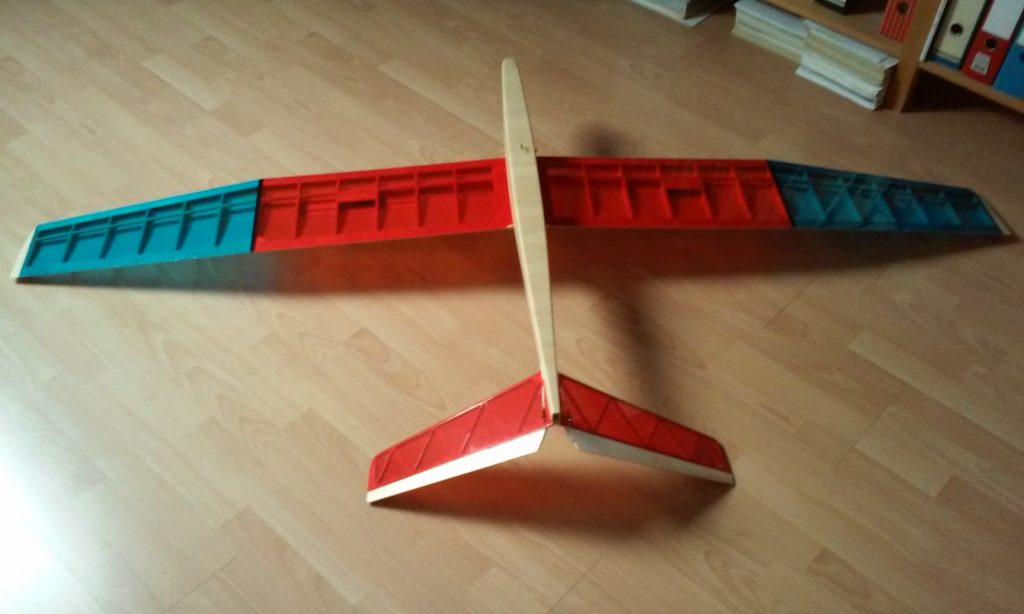
For the high start a special rubber is required, which is extended with a fishing line. For this I made a wooden drum from a kit which was provided by Modellbau Claus Thiele.
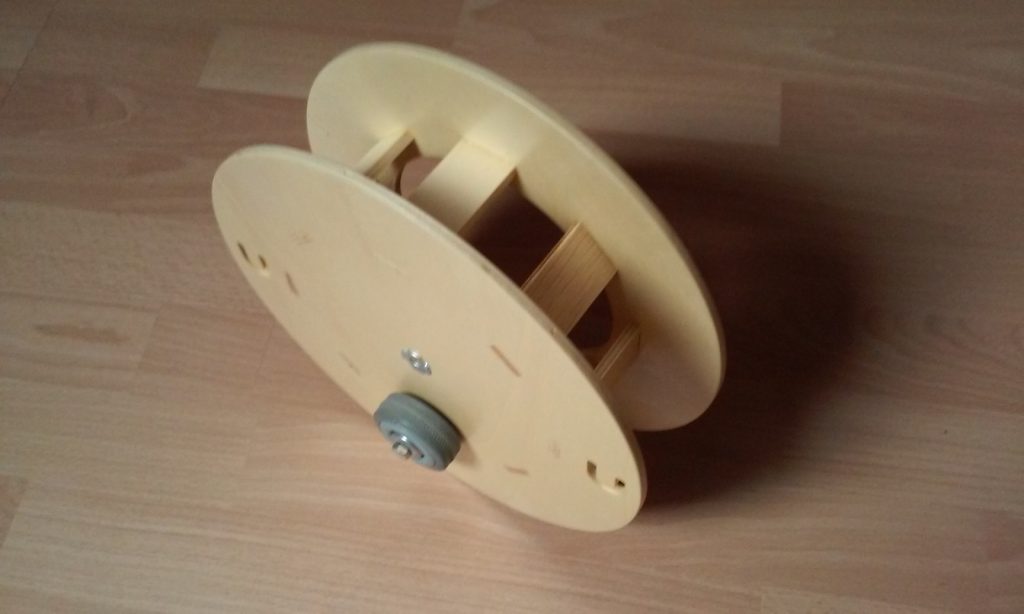
Varioprop Conversion
Here I want to show you, how I converted an old Graupner Varioprop transmitter to 2.4 GHz.
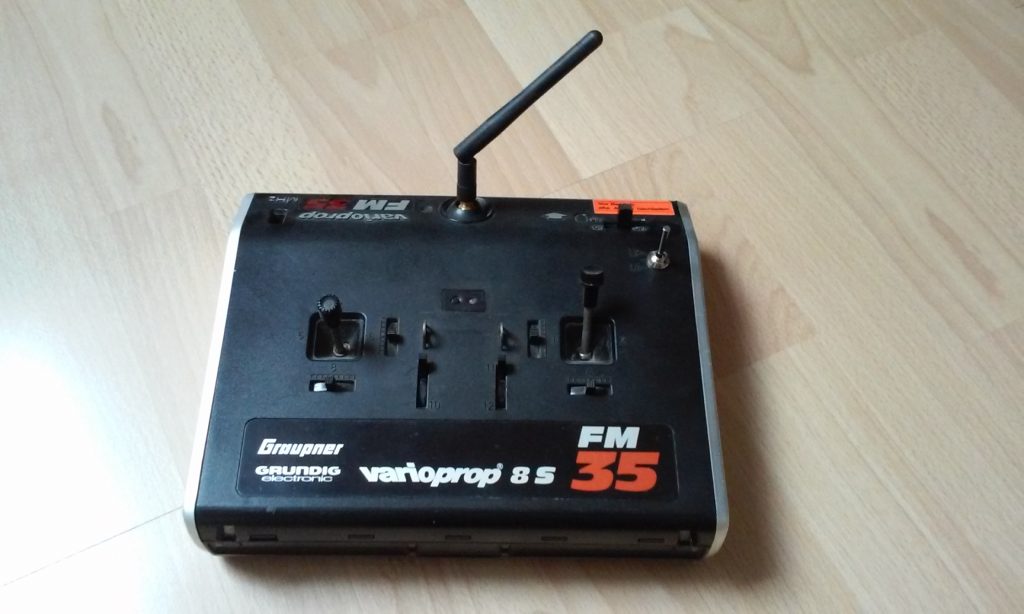
I didn’t want to have another transmitter with all kinds of bells and whistles. My intention was, to make an old transmitter usable again that was laying around in my cupboard. I have other radios that can do everything. On the other hand, I wanted to improve my programming skills for the Arduino microcontrollers.
As I wanted to use this transmitter especially for my new SFC-Stick, I limited the number of controls to four (throttle, rudder, elevator, ailerons). The two extra potentiometers in the center were not yet connected to the controller and the 3-position switch was not used in the program.
First, I removed all the electronic components, the antenna socket and the battery until only the mechanical parts (sticks) remained. Then an RF Module from FrSky (V8HT) was inserted. The new antenna socket was glued in with epoxy. Also, a new charging socket and a new on-off-switch were necessary. The battery is a 2-cell LiPo of 800 mAh which is absolutely sufficient. The transmitter now has a very low weight (670g ~23.6 oz).
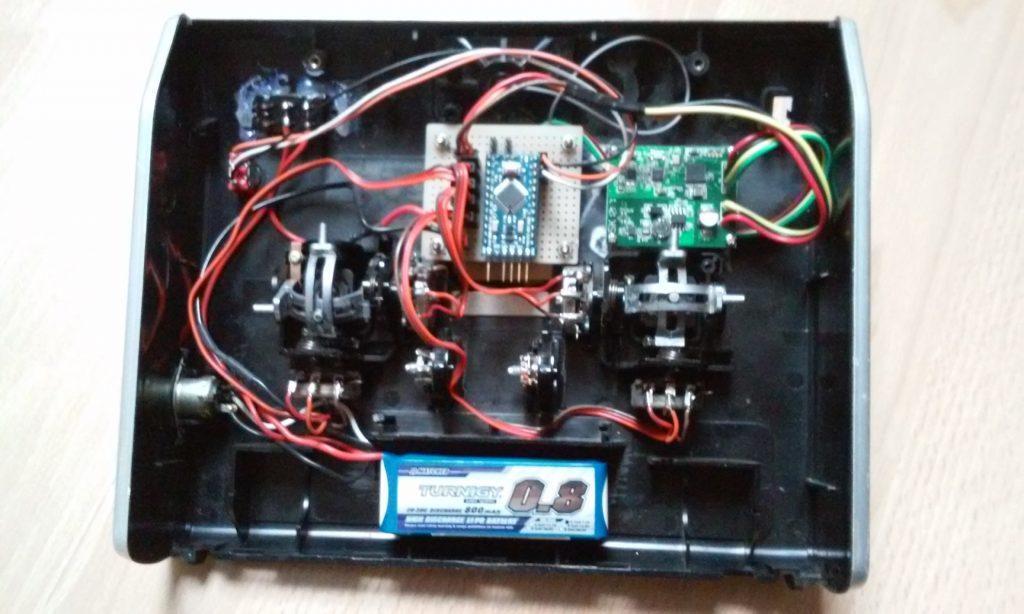
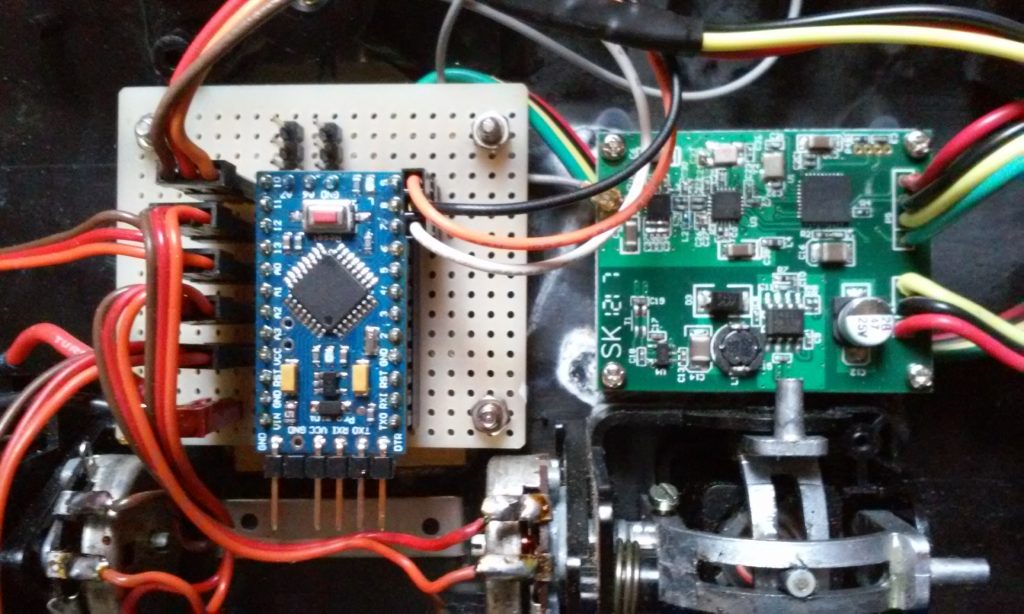
The PPM signal is provided by an Arduino Pro Mini.
You can find my sketch here: rc_encoder_sfc_stick
There is no display or keypad in the transmitter. If I want to change the program, I have to connect the Arduino to my PC and upload a modified sketch.
I use this transmitter specifically for my SFC-Stick model, which I have presented in another post.
My SFC-Stick
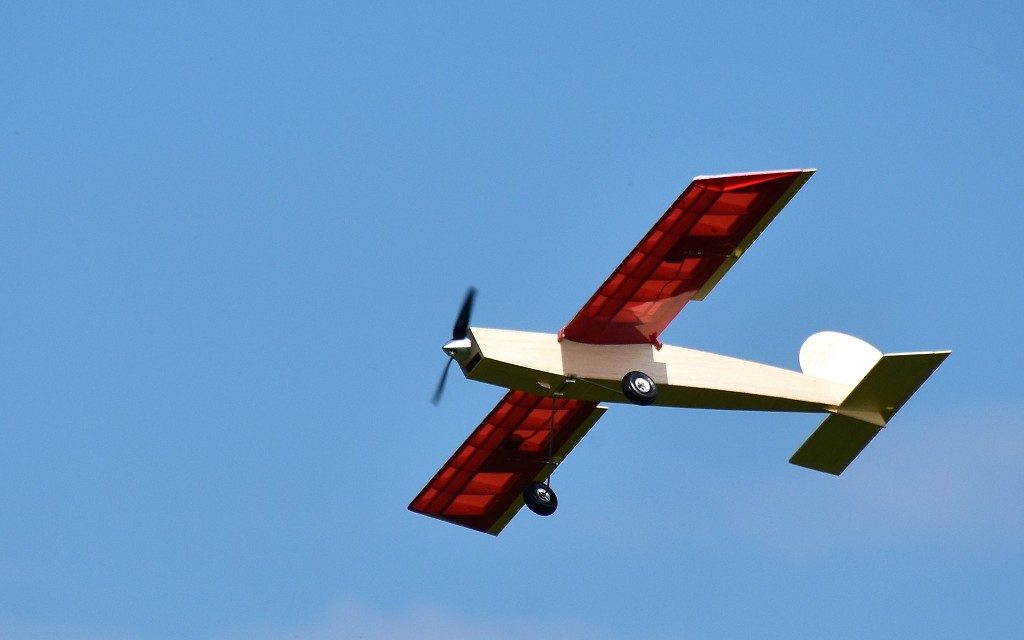
Here I want to show you my version of the Ugly Stick (SFC stands for Sport Flying Club). It was designed by a fellow club member more than twenty years ago as a project for our youth group. He provided some drawings the wing ribs and fuselage frames as milled parts and a stack of balsa wood for the remaining components. At that time, I obtained such a stack of material but never found the time to build the model.
Last year a new competition was devised in our club. We called it the “Fun Cup”. The rules: Within four minutes, as many rounds as possible had to be flown around two turnstiles 40 meters (~131′) apart. Within each round a “touch and go” had to be done in a landing field of 10 meters (~33′) in length. You got additional points for the final landing.
I really wanted to take part in this competition. But until that time, I had only flown gliders and did not have a single model with landing gear. What could I do? In February this year I discovered the material for the Stick in my cellar and started building immediately.
Originally, the wingspan should be 140 cm (~55″), but I decided to reduce it to 112 cm (~44″). The total length of the fuselage is also 112 cm. The wing was covered with transparent OraLight, white on the top and red on the bottom. The fuselage and the tail feathers were just painted with clear lacquer. The model is powered by an electric motor (DYMOND GTX-3546 (910kV)) and a LiPo battery (3s1p, 3300 mAh). The prop size is 11×7. The total flying weight is 1400 g (~50 oz).
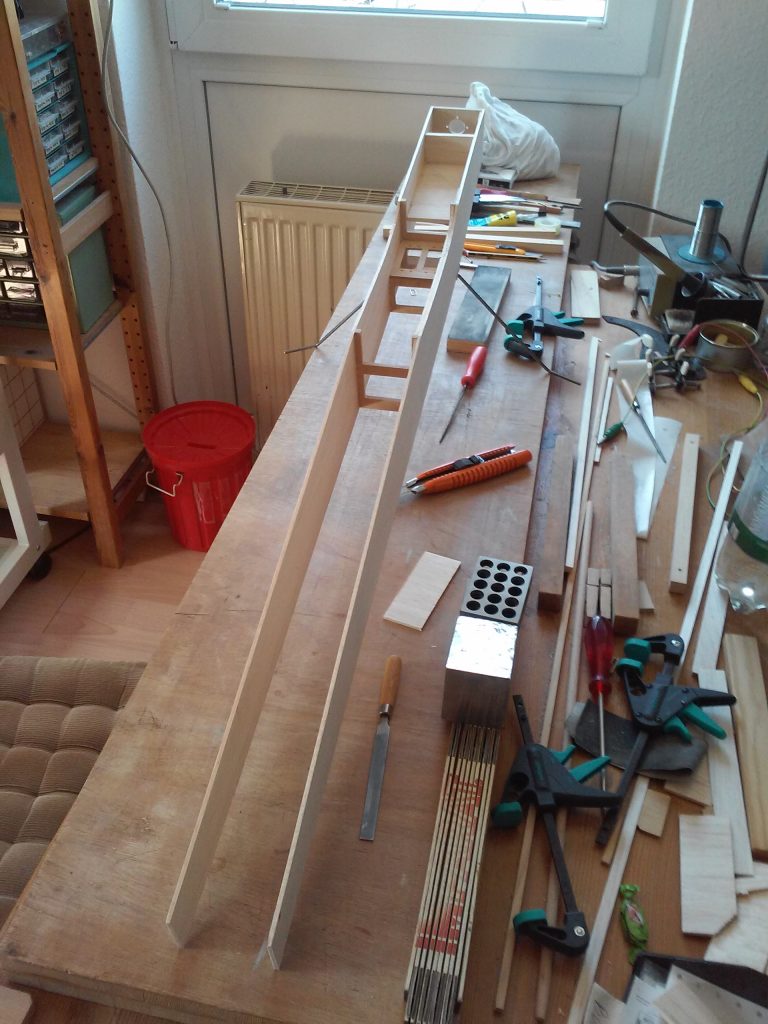
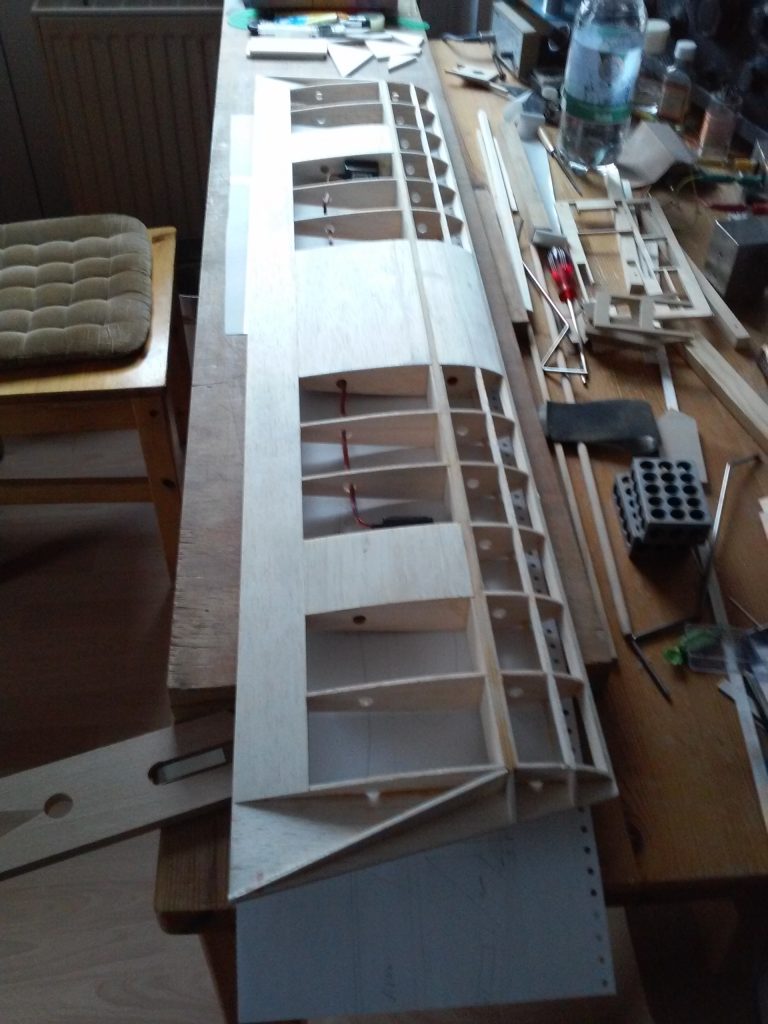
The model flew very well. Since I had little time to train the “touch and go” part, my participation in the competition was not so successful. But most importantly, the model is still intact!
The following picture shows me holding the model after the end of the competition.
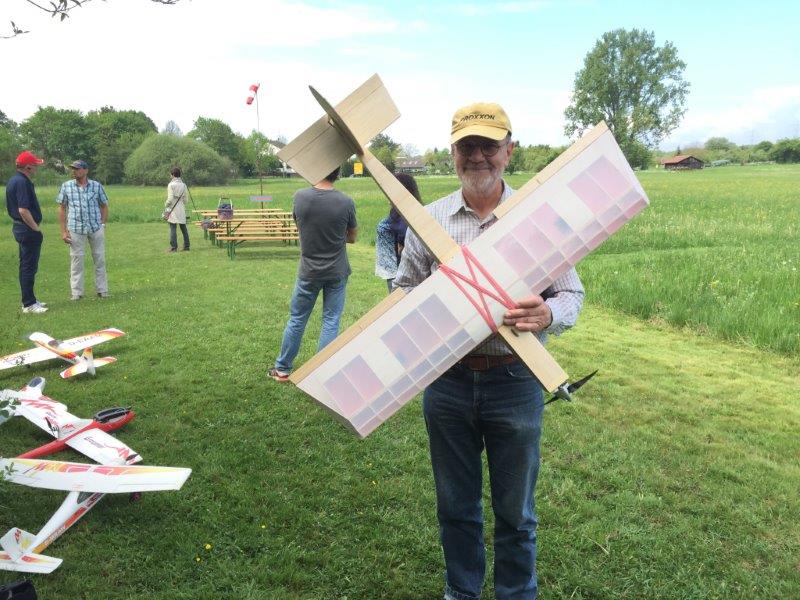
The model is controlled by an old Varioprop transmitter that I converted to 2.4 GHz.
My Chuck Gliders
At the age of ten I found the plan for a small chuck glider in a Mickey Mouse magazine. I asked my mother if she would buy me the necessary balsa wood. She did and my father promised to buy me a kit for a larger model, if I managed to finish the chuckie and bring it to fly. He did not seem very convinced.
The instructions in the magazine were quite detailed and although I did not build the plane very well, it eventually flew.
The model shown in the picture is a new one that was built when I led the youth group of the club. Wingspan: 380mm (15″), weight: 43g (1½ oz).
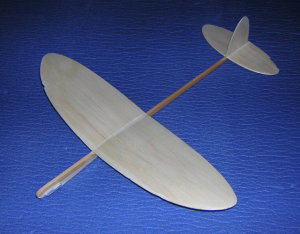
The next glider is a little bigger but lighter. Wingspan: 475mm (18¾”) weight: 36g (1¼ oz). It was made as a study model for a bigger RC version that I want to build.
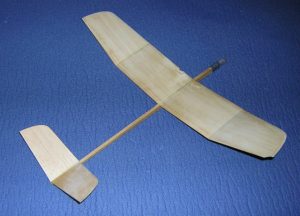
Also as a study model for a bigger RC version I built a tailless chuckie. Wingspan: 500mm (20″), weight: 21g (¾ oz).
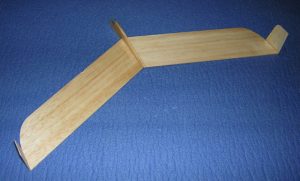
All of my chuckies are a little damaged from the test flights in my garden.
My School Project
In the last year of my junior high school I had to prepare a final year project. The subject was free. So I decided to build an RC sailplane and write about it. At that time, at the age of 15, I had only built models from kits. But now I wanted to design this one on my own. As I had read a lot of articles written by Werner Thies and Karl-Heinz Denzin in the German “Mechanikus” and “modell” magazines, I had pretty clear ideas about the size and the shape of the model. The picture shows me holding the finished product.
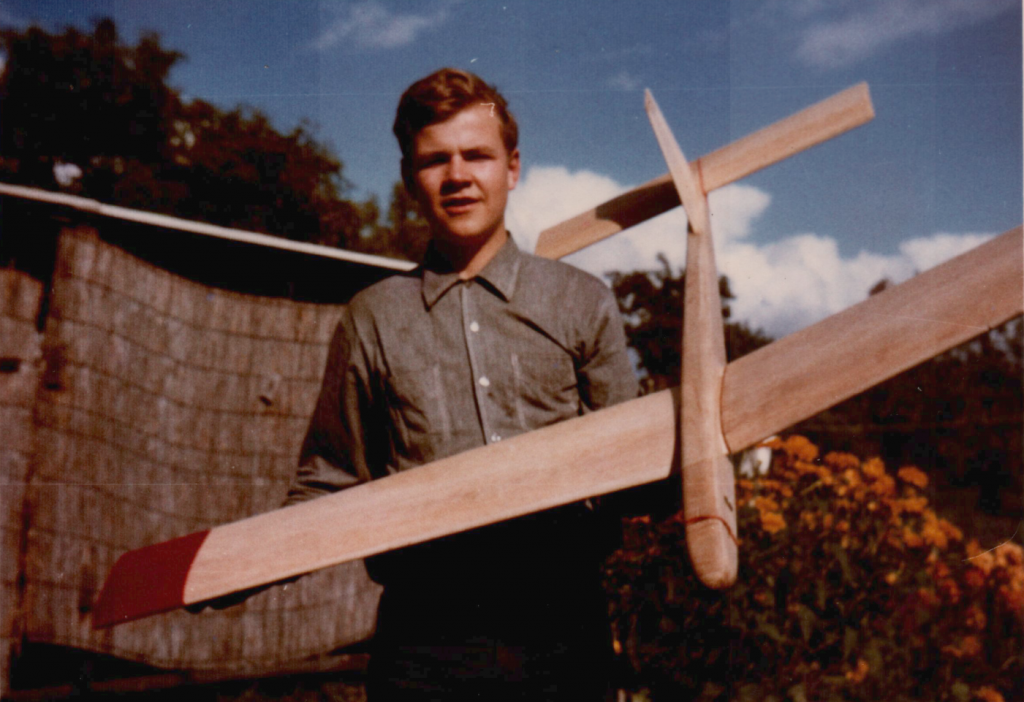
I’m sorry that I can’t show a drawing of this plane, but it was lost. Also the model doesn’t exist any more. So I can only describe it from memory:
Wingspan: 1800mm (~71″)
Root chord: 200mm (~8″)
Tip chord: 150mm (~6″)
Wing section: Goettingen 613
Stab section: Flat bottom, 10% thickness
Stab area: 25% of wing area
Weight: 1200g (~42oz)
The fully sheeted wings were fixed to the fuselage with tongue and box. The elevator was initially covered with tissue.
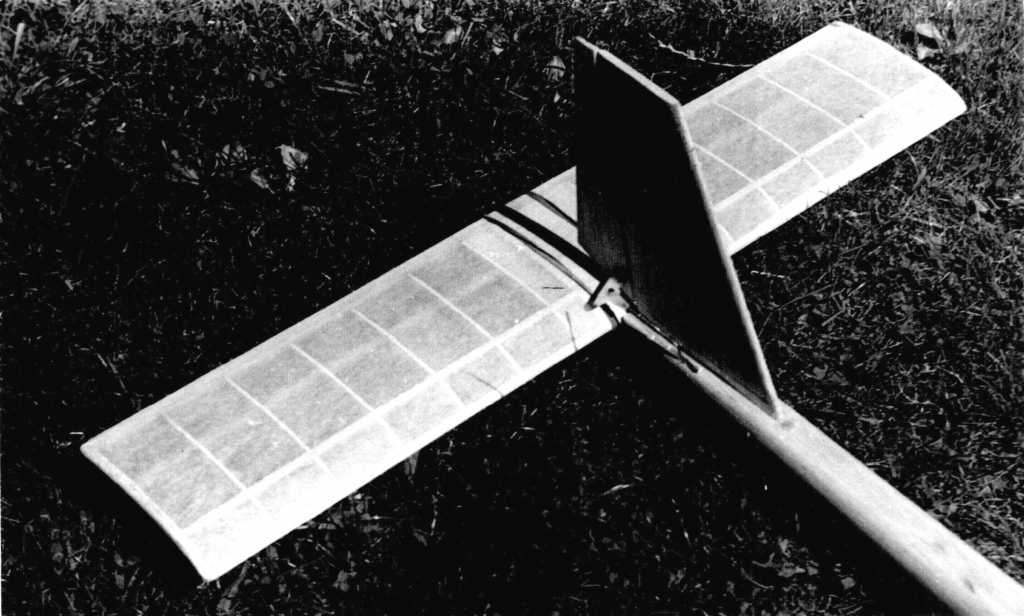
But after the first crash it was fully sheeted for greater stability.
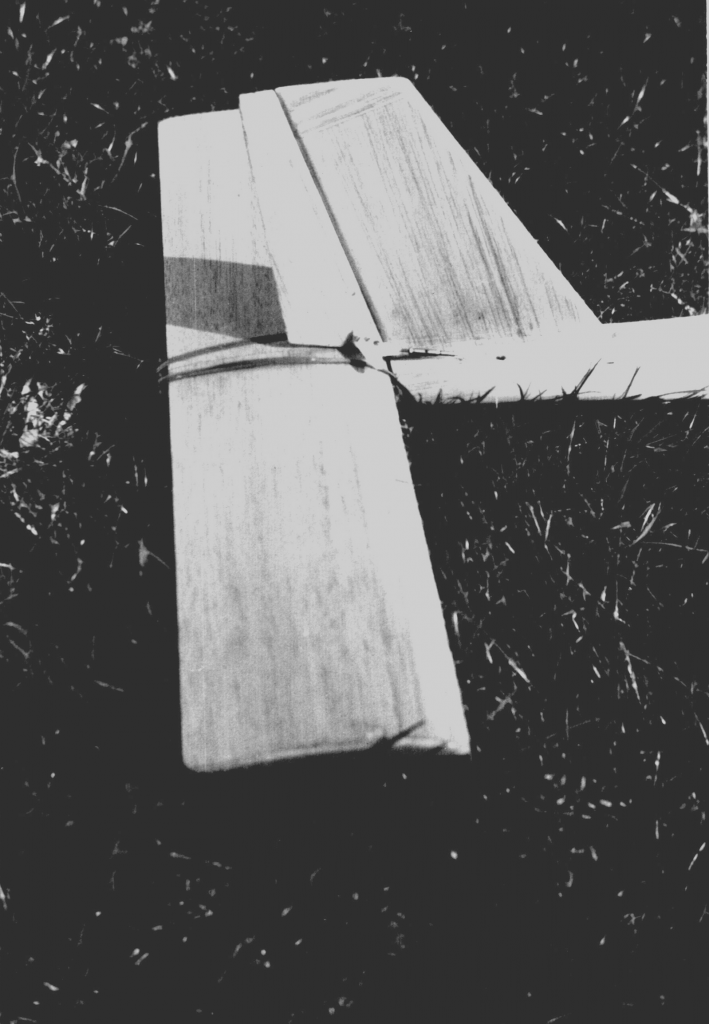
We already had a 3 channel Metz Mecatron radio. But the original receiver was damaged. So I built a new 2-channel RX from a kit offered by the “Reuter” company (doesn’t exist any more). This gave me perfect rudder control. The picture shows the radio installation: A 6 volt DEAC accumulator in the front, followed by the receiver and the Bellamatic servo. There was no elevator control.
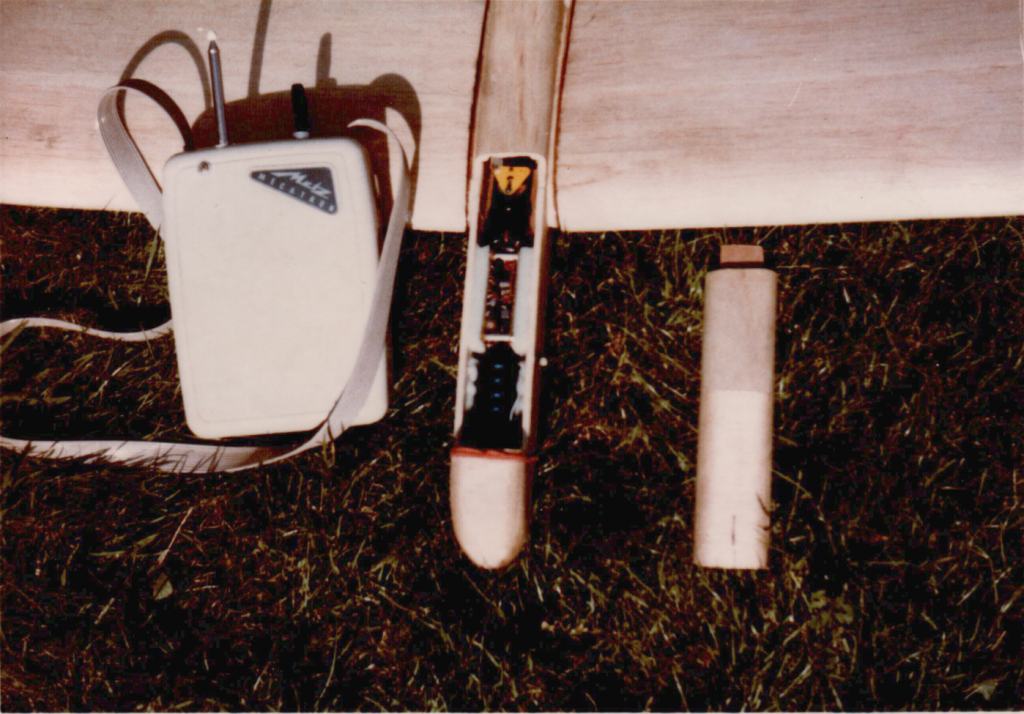
The model flew very well and I had a lot of fun with it. At that time my father was a member of the FAG Kaltenkirchen and so I made most of my flights on their Moorkaten airfield. For high start we used 200m of fishing line. The high weight of the model was an advantage in the windy weather conditions of northern Germany.
Additional Pictures:
